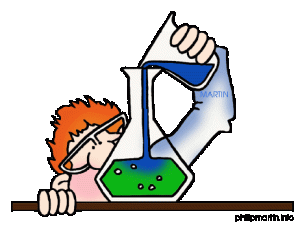 STEM is certainly the new buzzword in library programming for children. That means a rush to create and promote STEM programming. The problem is that STEM is an educational initiative and most of the available literature is geared towards classroom activities. As yet, there is no set of Best Practices for STEM programming in libraries.
STEM is certainly the new buzzword in library programming for children. That means a rush to create and promote STEM programming. The problem is that STEM is an educational initiative and most of the available literature is geared towards classroom activities. As yet, there is no set of Best Practices for STEM programming in libraries.
The more I read about STEM activities, the more I realize that simply adding science facts to existing programs is not the answer. Yes, we already do include many STEM elements in existing programs. Even in Preschool Storytimes we do counting rhymes and have science-related themes. But to be truly effective, we need to get beyond simple counting and straightforward presentation of facts. We should be encouraging understanding of broader concepts and stimulating scientific thinking. If you think children are not capable of learning to think scientifically, I would direct you to a TED talk that includes the youngest person ever to have authored a peer-reviewed scientific study: Science is for everyone, kids included. My favorite point in this talk is that science is essentially play, something kids are inherently good at.
One of the things that prompted me to reflect on how libraries incorporate STEM into their programs was a brief statement by everyone’s favorite astrophysicist, Neil deGrasse Tyson, where he answers the question: How do I get my kid interested in science? His point is that kids are naturally curious, which is the basis of scientific discovery. We need to step back and let them explore. The problem is that we often are too busy telling them to sit down and shut up because their curiosity interrupts our carefully ordered world – or program. How can we, in our library programs, encourage that curiosity?
The first step, I think, is to stop compartmentalizing STEM programs. The best STEM activities are not stand-alone programs. Educators are encouraged to integrate STEM within and across the curriculum. Libraries need to integrate STEM concepts into everything they do. After all, we already integrate early literacy content into our Preschool programming, or we should be. STEM is just another type of literacy. The first step to successful STEM programs is to stop thinking of them as somehow separate from and different than our other programs. Science, math and technology are part of our everyday lives. Let’s make them part of our everyday programming as well.
Related articles
- Neil deGrasse Tyson: STEM Fields, Jobs, and How We Learn (itsabeautifulearth.com)


Thanks for the ping back! I definitely agree: Spreading STEM education is much more than just adding science facts to the curriculum. We need to encourage children to question and test their realities. We should make sure kids understand the world around them isn’t how it appears to their senses, but subject to their creative forces and ideas. It’s great to see someone else contributing to the expansion of the STEM fields pivotal to our paradigm!
Pingback: Making STEM Programs Work In The Library | Inno...
Pingback: Making STEM Programs Work In The Library | Libr...
Pingback: Making STEM Programs Work In The Library | STEM...